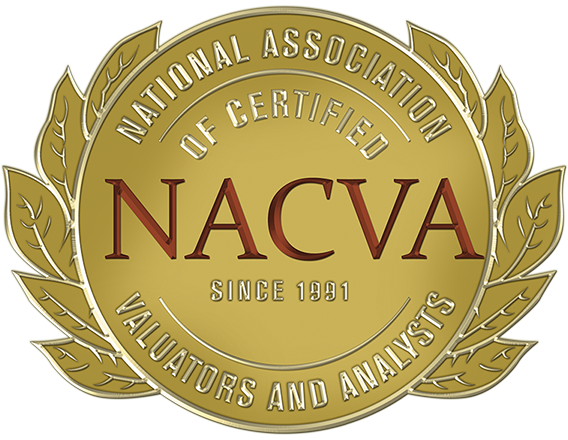
David Fein sat down with Paul Hamann of RCReports to get a behind the scenes look at RCReports.
David: Thank you for your time today. Let us start with how you got into reasonable compensation.
Paul: After graduating from college with a degree in entrepreneurship, I quickly realized no one wants to hire someone who wants to work for themselves. So, I began working in human resources, mainly as a headhunter recruiting executive staff. As part of the process, I needed to do reasonable compensation studies.
I quickly realized the level of information I needed was not available which made the process overly complex and time consuming. It was costing between $2,000 and $3,000 per study. And the result was not as comprehensive as I would have liked. But then the recession hit in 2008 and business slowed down so I began working with a CPA friend, Jack Salewski, (now our VP of education) who was having the same challenges I had been having with reasonable compensation studies, except he needed them for the IRS.
David: Where was the data you were using coming from and why doesn’t this data work?
Paul: Before RCReports, there was not a single source for reasonable compensation studies. I gathered information from any source I could find. From the Bureau of Labor Statistics (BLS) stats to Glass Door. My frustration was with both the quality of the data and how long it took to get. I knew there had to be a way to simplify the process by consolidating and categorizing the data.
David: The Bureau of Labor Statistics (BLS) has a lot of salary data online? Why can’t valuators and tax professionals just use their data?
Paul: The Bureau of Labor Statistics (BLS), census data, and the State Departments of labor offer data but it has huge holes in it and its exceedingly difficult to find what you are looking for. If the information is out there, it is hard to come by and is very general with little organization and categorization. This is problematic if you need information on a particular job category, in a specific geographic location.
David: The solution was to create your own?
Paul: Yes, I reached out to a contact of mine in (website) development, who is now our head nerd as he likes to be called, but he is basically, our chief programmer and developer on the software side. I said, “Hey, I’d like to do something like this. What do you think?”. He said it would probably take about two weeks. That was 2010, our first version debuted in 2012 and we have been working on it ever since. We are extremely proud of our product.
David: Why is ‘reasonable compensation’ so important for tax?
Paul: In 2005, the IRS began some aggressive initiatives around reasonable compensation for S- Corps. Payroll taxes are far lower for a small business owner if he pays himself $24,000 rather than $75,000 in reasonable compensation because distributions were not subject to payroll taxes but wages are. This tax saving would also impact their contributions to benefits like Social Security and Medicare. In this instance, there is no incentive for the company to ensure reasonable compensation and the individual is happy because they are ‘saving’ on taxes, but this does not work for the IRS because they still need money to keep their entitlement programs funded. This led to the IRS needing to establish a standard for determining ‘reasonable compensation’. For the taxpayer, if it is found they have not paid sufficient ‘reasonable compensation’ they would have their distributions recharacterized as compensation and must pay employment taxes plus penalties and interest.
David: How did you move from a tax focus to get into the valuation sector?
Paul: In 2013 Stephen Kirkland started using RCReports for calculating reasonable compensation in the context of business valuation. This got me curious, so when he said he was speaking at a NACVA conference in New Orleans in 2015, I grabbed a ticket and went down there to find out everything I could about this new market. I’ve been very fortunate in getting to know Stephen over the years, he even agreed to be one of our beta testers when we started building out RCReports for valuators.
Around about the same time, the IRS released the Job Aid on Reasonable Compensation. It documented the cost, the market, and the income approaches as approaches they recognized. This required a large amount of re-tooling. We already had the costs going, but nobody had ever published anything on the cost approach before the Job Aid came out. In another twist of fate, it turns out Michael Gregory helped get the Job Aid produced while he was at the IRS. And we have Michael to thank for filing the freedom of information act to have it released to the public.
David: Where do you source the data?
Paul: The bulk of our data comes from the Bureau of Labor Statistics (BLS). The other big source is the Census Bureau. Even though they only do a big count every 10 years, they are constantly gathering data. They track trends, like where people are moving. Most states also track wages via their own departments of labor, so all these groups work together feeding data into a central point, the BLS.
David: How often do you gather data?
Paul: Once a year, the BLS does a big data releases with smaller releases happening continually throughout the year. Since the raw data is not very user-friendly, it then takes our data team as little as five to six months or as much as 12 months to work through it and produce a usable data set.
David: What is the breakdown of proprietary data to BLS data?
Paul: About 60% of the data is proprietary to us and the other 40% you could probably find, or you would be able to find within the BLS or the Census Bureau.
David: What is the secret sauce?
Paul: Because valuators are very analytical, we often get asked this. All I tell them is I would love to show you what we have done because it is beautiful and it is unbelievable, but we cannot. Here is what we can offer you: there is a summary on every report of how we do it; there is also a deep dive methodology report that does not reveal the secret sauce, but everything up to it; and lastly, we can send either Jack Salewski (VP of Education) or Bill Schneider (VP of Analytics) who both have expert witness credentials, to your court case or IRS examination. And if necessary, and we do not really want to do this, but, if necessary, if somebody needs to get a look at the secret sauce, if it is protected behind closed doors, judges, chamber, whatever Bill Schneider will walk you through how we came up with it.
David: Why is your secret sauce so secret?
Paul: We use an extremely complex process of algorithms and there are not ways to protect what we do in the public space. Copyright cannot do it and patents do not work on business processes. You only have to change a few things and you would be doing it differently to us and could put us out of business.
David: Tell us more about the RCReports team.
Paul: Bill Schneider is the main data guy; he is one of the smartest people I know. Jack Salewski is our VP of education. Jack is a CPA and he is an expert on how reasonable compensation applies the tax and business situations. I could take another five minutes of your time and tell you about all the other wonderful people who make RCReports tick and provide all the help and handholding our users require, just suffice to say we have an awesome team and I couldn’t be prouder of everyone involved.
=================================================================
About RCReports – Solving the Compensation Complexity Problem
Paul Hamann is the CEO of RCReports, #1 Reasonable Compensation Analysis Web based tool. It is used by CPA’s, EA’s, Tax Advisors, Valuators, Forensic Accountants and Attorneys when they need a report to determine and justify Reasonable Compensation. Whether for Tax Compliance, Normalization or Planning, RCReports has a report to fit your need.
